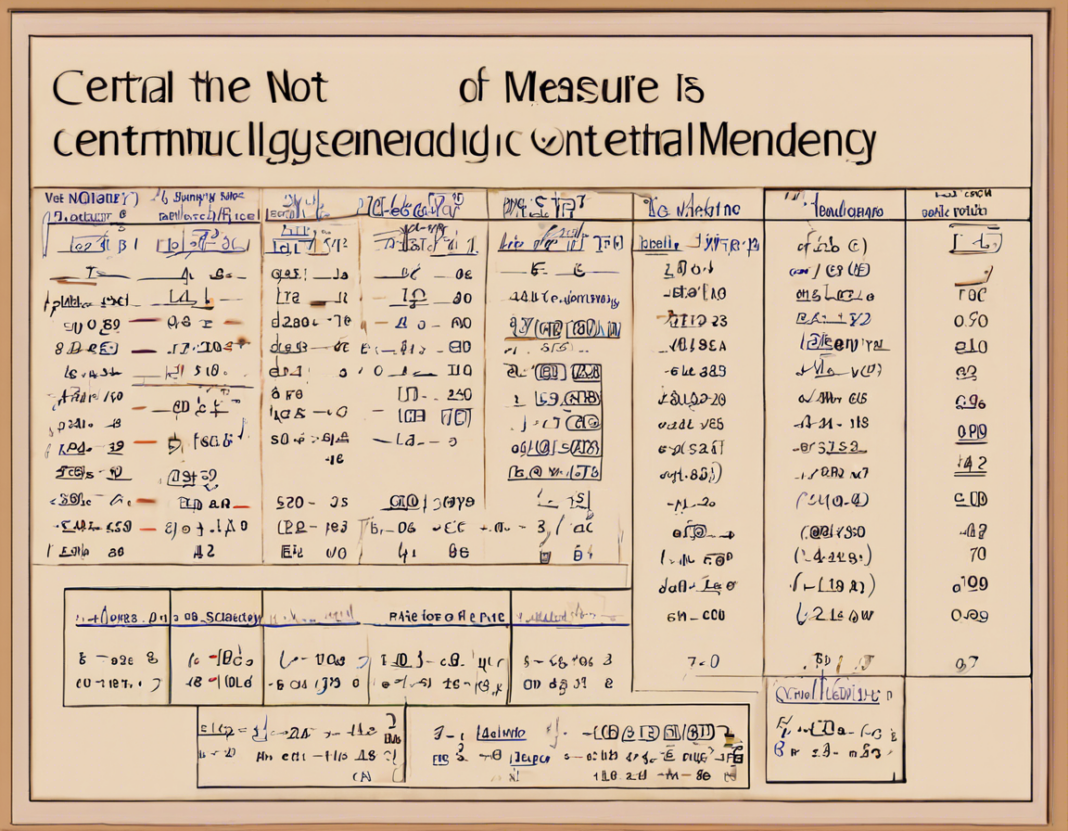In the world of statistics, we often encounter various terms and concepts that help us make sense of data. One such concept is the mode. While measures of central tendency like the mean and median are commonly used to summarize a dataset, the mode serves a slightly different purpose. In this article, we will explore what the mode is, how it differs from other measures of central tendency, and why it is not considered a measure of central tendency.
Understanding the Mode
The mode of a set of data is the value that appears most frequently. In simpler terms, it is the value that occurs with the highest frequency in a dataset. For example, in the dataset {2, 3, 5, 3, 8, 3, 2}, the mode is 3 since it appears more frequently than any other number.
Mode vs. Mean and Median
-
Mean: The mean is the average of a set of numbers and is calculated by adding all values and dividing by the total number of values. Unlike the mode, the mean takes into account all values in a dataset and can be influenced by extreme values.
-
Median: The median is the middle value of a dataset when arranged in ascending order. It divides the data into two equal halves. Unlike the mode, the median is not affected by extreme values and provides a better representation of the central value when the data is skewed.
Why Mode is not a Measure of Central Tendency
While the mode is a useful statistical measure, it is not considered a measure of central tendency because it does not provide information about the typical or central value of a dataset. Unlike the mean and median, the mode does not consider all values in a dataset but only focuses on the most frequently occurring value.
Importance of the Mode
Despite not being a measure of central tendency, the mode serves several important purposes in statistics:
- Identifying most common value: The mode helps in identifying the value that occurs most frequently in a dataset, which can be crucial in various applications.
- Data exploration: Examining the mode can provide insights into the distribution of data and highlight any patterns or anomalies present.
- Nominal data analysis: In datasets with categorical or nominal data, the mode is often the only appropriate measure of central tendency.
Calculating the Mode
Finding the mode of a dataset is relatively straightforward. You simply need to identify the value that appears most frequently. In some cases, a dataset may have multiple modes (multimodal), or there may be no mode if all values occur with the same frequency (uniform distribution).
Example:
Consider the dataset: {2, 3, 5, 3, 8, 3, 2}. In this case, the mode is 3 since it appears three times, more than any other value.
Frequently Asked Questions (FAQs)
- Is the mode always unique in a dataset?
No, a dataset can have one mode (unimodal), multiple modes (multimodal), or no mode at all if all values occur with the same frequency.
- Can the mode be used with both numerical and categorical data?
Yes, the mode can be calculated for both numerical and categorical data. For categorical data, the mode represents the category with the highest frequency.
- How does the mode differ from the concept of peak in statistics?
The mode represents the most frequently occurring value in a dataset, while peak refers to the highest point in a distribution curve.
- Is the mode affected by outliers in a dataset?
Unlike the mean, the mode is not influenced by outliers in a dataset since it focuses only on the most common value.
- In what scenarios is the mode more informative than the mean or median?
The mode is particularly useful when dealing with categorical data, identifying popular choices or preferences, and determining the most frequent outcomes in a dataset.
Conclusion
While the mode is a valuable statistical measure for identifying the most frequently occurring value in a dataset, it is distinct from measures of central tendency like the mean and median. Understanding the differences between these measures and knowing when to use each one is essential for accurate data analysis and interpretation. By recognizing the unique role of the mode and its significance in various applications, statisticians and data analysts can make more informed decisions based on the characteristics of their datasets.

